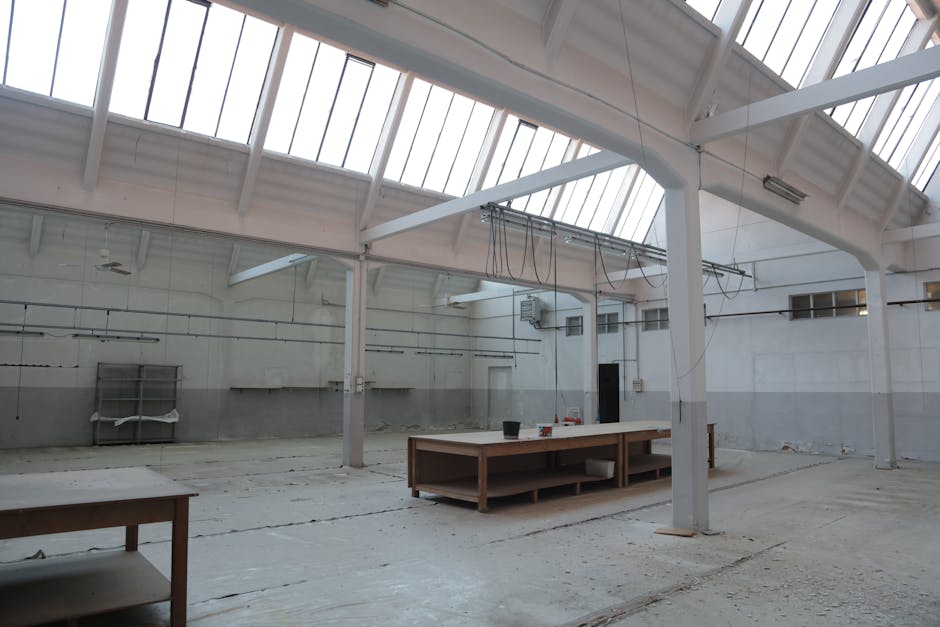Importance of productivity in manufacturing
Productivity is essential in manufacturing as it directly impacts efficiency and profitability. High productivity means getting more done in less time, which leads to lower production costs and increased output. Key benefits of high productivity in manufacturing include meeting customer demands, improving overall competitiveness, and maximizing profits. By investing in tools and technologies like high bay lights, manufacturers can enhance productivity by creating a well-lit and conducive work environment that boosts worker efficiency and minimizes errors.
Understanding high bay lighting
High bay lighting refers to lights used in spaces with high ceilings, like warehouses or manufacturing facilities. These lights are designed to provide bright and uniform lighting to improve visibility and safety for workers. High bay lights are typically installed at heights of 20 feet or more above the floor. They use special lenses and reflectors to direct light downwards efficiently. LED high bay lights are popular due to their energy efficiency and long lifespan. High bay lights can help increase productivity by creating a well-lit work environment, reducing eye strain, and enhancing overall safety in manufacturing settings.
Benefits of high bay lights
High bay lights provide bright illumination for large indoor spaces, making them ideal for manufacturing settings. They help improve visibility and safety in warehouses or factories by reducing shadows and increasing light coverage. Additionally, these lights are energy-efficient, saving on electricity costs while providing a longer lifespan compared to traditional lighting options. Investing in high bay lights can lead to a more productive work environment with better visibility, lower maintenance costs, and reduced energy consumption.
Factors to consider when choosing high bay lights
When choosing high bay lights for your manufacturing facility, there are a few key factors to consider. Ensuring the right lighting can greatly impact productivity and safety in your workspace. Here are some important factors to keep in mind:
- Brightness and Illumination: Consider the required brightness level for the tasks being performed in the space.
- Energy Efficiency: Opt for energy-efficient options to reduce electricity costs in the long run.
- Durability and Longevity: Look for lights that are durable and have a long lifespan to minimize maintenance needs.
- Lighting Control: Check if the lights come with dimming or control capabilities to adjust lighting as needed.
- Heat Dissipation: Ensure the lights have proper heat dissipation features to prevent overheating and maintain a safe environment.
- Installation and Maintenance: Consider the ease of installation and maintenance to minimize disruptions to your operations.
By taking these factors into account, you can select high bay lights that will effectively boost productivity and enhance the working conditions in your manufacturing facility.
Impact of lighting on productivity
If you work in a manufacturing setting, the type of lighting can greatly affect your productivity. Proper lighting can reduce eye strain, decrease errors, and boost morale among workers. Good lighting can enhance focus and energy levels, leading to improved efficiency in tasks. In contrast, poor lighting can cause fatigue, headaches, and make it harder to concentrate. High bay lights are specifically designed for tall ceilings common in manufacturing spaces, providing bright and uniform illumination. Upgrading to high bay lights can create a more conducive work environment, potentially leading to increased productivity and overall job satisfaction.
Types of high bay lighting technologies
High bay lighting technologies for boosting productivity in manufacturing come in various types. The most common ones include LED, fluorescent, and induction lighting.
LED lights are energy-efficient and have a long lifespan, making them a popular choice for many manufacturing settings. Fluorescent lights are cost-effective but may require more frequent replacement compared to LEDs. Induction lighting offers a balance between energy efficiency and longevity, making it a reliable option for some manufacturing facilities. Considering the specific needs of your manufacturing space and budget constraints, choosing the right type of high bay lighting technology can significantly impact your overall productivity.
Installation and maintenance of high bay lights
When installing high bay lights, it’s essential to position them correctly for optimal lighting in the manufacturing area. Proper maintenance is key to ensuring the lights function efficiently and have a longer lifespan. Here are some key points to consider:
-
High bay lights should be installed at an appropriate height to achieve the desired light spread and intensity.
-
Regular cleaning of the lights and ensuring there are no obstructions will help maintain their performance.
-
Inspecting the lights periodically for any signs of damage or wear and tear is crucial for safety and efficiency.
-
Replacing any faulty bulbs or components promptly will ensure continuous and effective lighting in the manufacturing space.
Energy efficiency and cost-saving with high bay lights
High bay lights are energy-efficient lighting fixtures commonly used in large spaces like warehouses and industrial settings. These lights produce a lot of light while using less energy, which can help save on electricity costs. High bay lights are designed to be mounted high above the ground, providing ample illumination to large areas. Switching to high bay lights can lead to significant cost savings on energy bills over time.
Case studies: successful implementation of high bay lights
Successful implementation of high bay lights can lead to notable improvements in productivity levels within manufacturing settings. For example, Company XYZ saw a 20% increase in output after switching to high bay lights. Additionally, Company ABC reported a 30% reduction in errors during production processes due to improved visibility from the new lighting system. These case studies demonstrate the tangible benefits that can be achieved through the strategic integration of high bay lights in manufacturing facilities.
Conclusion: optimizing productivity with high bay lights
High bay lights play a crucial role in maximizing productivity in manufacturing plants. By providing ample and uniform lighting, these lights can significantly improve worker efficiency and safety. Implementing high bay lights can lead to streamlined operations, reduced errors, and increased output. The investment in high bay lighting technology is justified by the noticeable enhancement in productivity levels and overall work environment.


